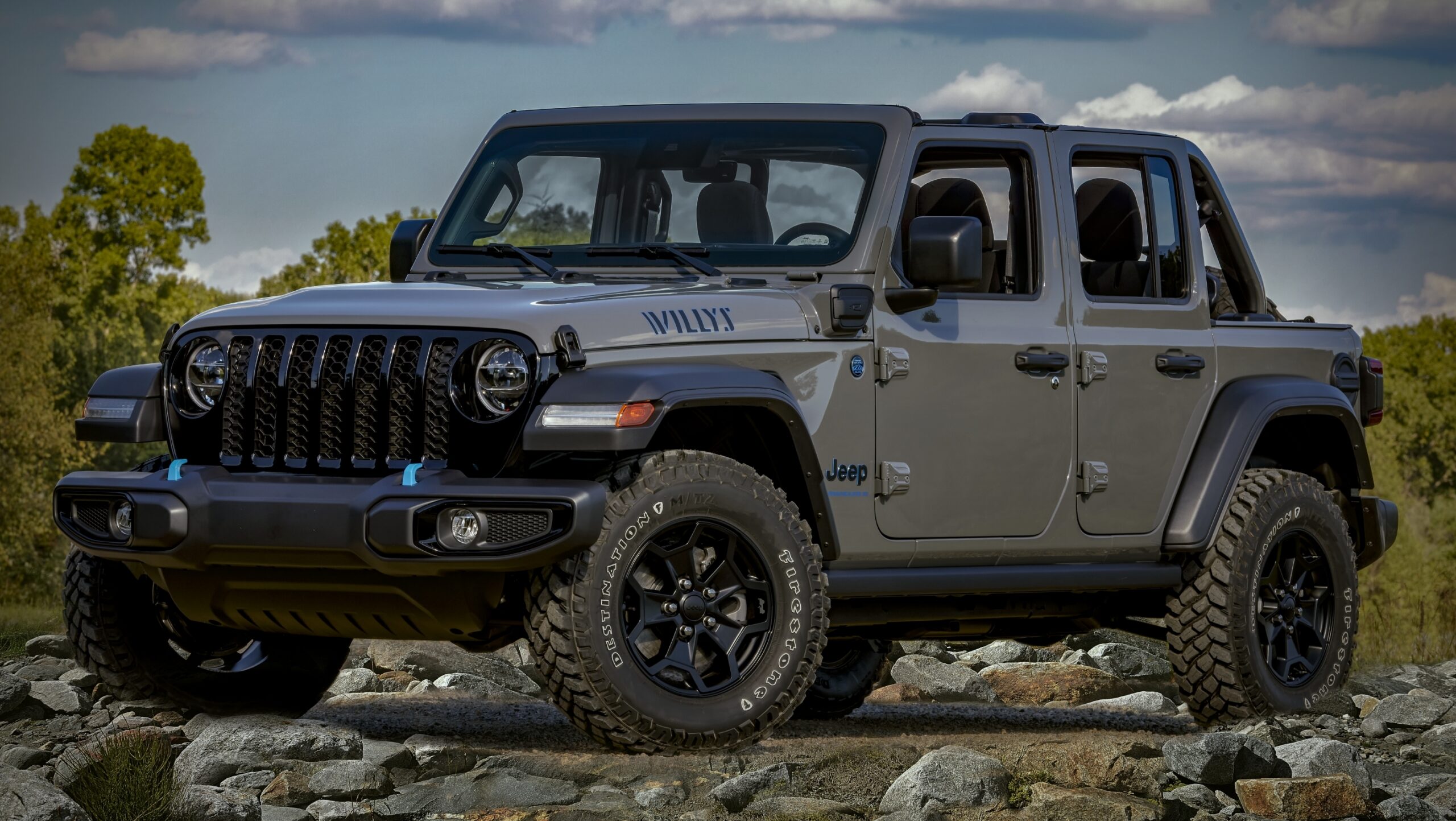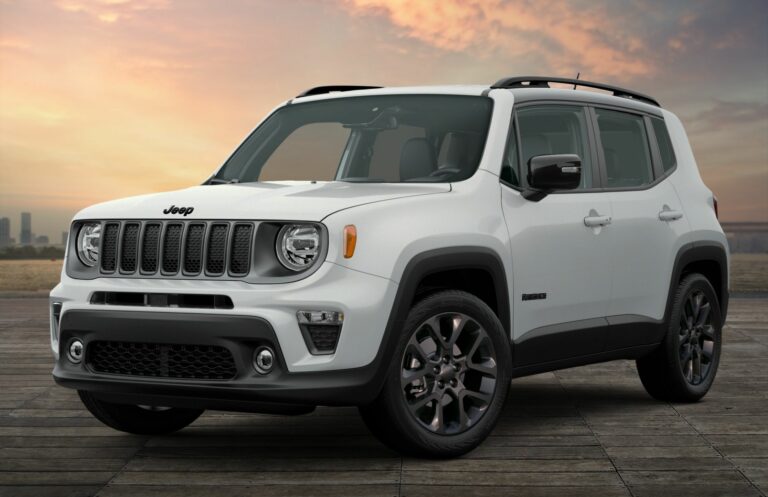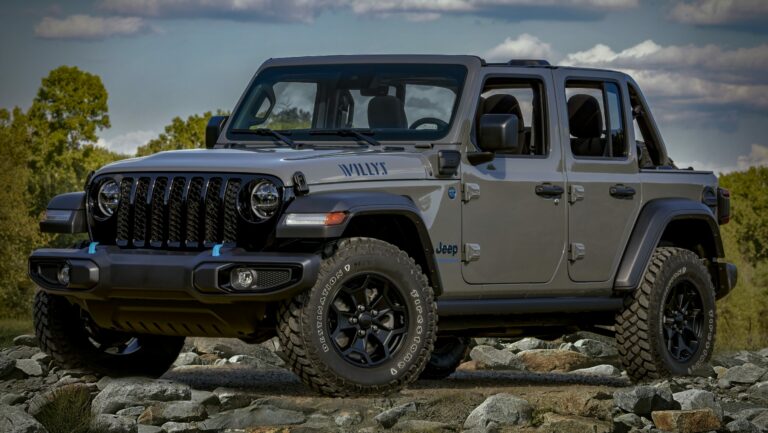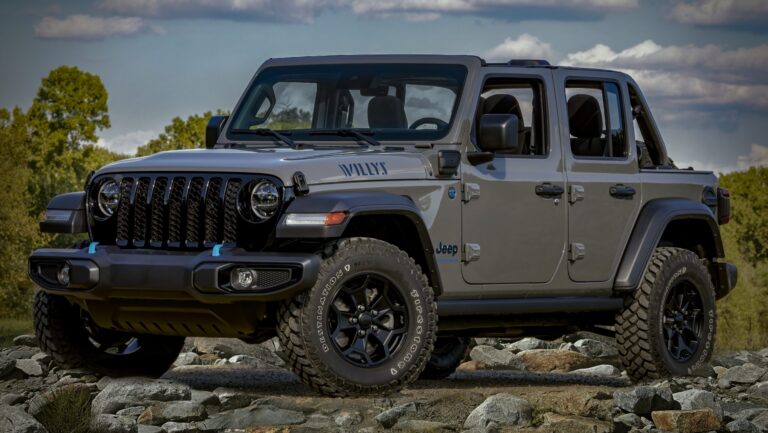Jeep 2.5l Used Engines For Sale: Your Comprehensive Guide to Reviving Your Ride
Jeep 2.5l Used Engines For Sale: Your Comprehensive Guide to Reviving Your Ride jeeps.truckstrend.com
The call of the wild, the rumble of tires on a dirt path, the iconic silhouette against a rugged landscape – these are the hallmarks of a Jeep. For decades, the Jeep 2.5L inline-four engine, specifically the AMC 150 I4, has been the reliable heart of countless Wranglers, Cherokees, and Comanches. Known for its simplicity, durability, and surprising capability despite its modest power output, this engine has earned a special place in the hearts of off-road enthusiasts and daily drivers alike.
However, even the most robust engines eventually show their age. When faced with a failing 2.5L engine, many Jeep owners turn to the market for Jeep 2.5l Used Engines For Sale. This decision often stems from a desire to maintain the vehicle’s originality, leverage the engine’s inherent reliability, or simply find a cost-effective solution to get their beloved Jeep back on the road or trail. This comprehensive guide will delve into every aspect of acquiring a used 2.5L Jeep engine, from understanding its nuances to successful installation and maintenance, ensuring you make an informed decision for your next adventure.
Jeep 2.5l Used Engines For Sale: Your Comprehensive Guide to Reviving Your Ride
Understanding the Jeep 2.5L Engine (AMC 150 I4): A Brief History and Specifications
Before diving into the specifics of purchasing, it’s crucial to understand what makes the Jeep 2.5L engine a popular choice among used engine buyers. The AMC 150 (150 cubic inches, or approximately 2.5 liters) is an inline four-cylinder engine that was produced from the mid-1980s through the early 2000s. It powered a variety of iconic Jeep models, including:
- Jeep Wrangler (YJ and TJ generations): From 1987 to 2002
- Jeep Cherokee (XJ): From 1984 to 2000
- Jeep Comanche (MJ): From 1986 to 1992
This engine, initially carbureted, transitioned to throttle-body injection (TBI) and later to multi-port fuel injection (MPI), significantly improving its efficiency and reliability. Its key features include:

- Inline 4-cylinder configuration: Simple and balanced design.
- Pushrod overhead valve (OHV) design: Less complex than overhead cam engines, making it easier to work on.
- Cast iron block and cylinder head: Contributes to its legendary durability.
- Modest horsepower and torque: Typically ranging from 105 HP (carbureted) to 120-125 HP (MPI), with torque around 135-140 lb-ft. While not a powerhouse, its torque curve is well-suited for off-road crawling and general utility.

The 2.5L’s simplicity is its greatest strength. Fewer moving parts mean fewer points of failure, making it remarkably robust and forgiving of neglect compared to more complex modern engines. This inherent reliability is a primary reason why Jeep 2.5l Used Engines For Sale remain in high demand.
Why Choose a Used Jeep 2.5L Engine? Benefits and Advantages
Opting for Jeep 2.5l Used Engines For Sale isn’t just about saving money; it’s a strategic decision that offers several compelling benefits:
- Cost-Effectiveness: This is undoubtedly the biggest draw. A used engine can be significantly cheaper than a brand-new crate engine or a professionally rebuilt unit. This makes it an ideal solution for older Jeeps where the vehicle’s market value might not justify a high-cost engine replacement.
- Availability: Due to the sheer number of Jeeps produced with the 2.5L engine and their long lifespan, the market for used units is quite robust. You’re more likely to find a suitable used engine than a new one for these older models.
- Reliability (with Proper Vetting): When properly inspected and sourced, a used 2.5L engine can offer many more years of dependable service. Their simple design means they often wear predictably, and a well-maintained unit can easily reach 200,000 miles or more.
- Ideal for Swaps and Replacements: For enthusiasts restoring an older Jeep, replacing a blown engine, or even undertaking a project build, a used 2.5L engine provides a straightforward and period-correct replacement that maintains the vehicle’s original character and powertrain compatibility.
- DIY-Friendly: The straightforward design of the 2.5L engine makes it more accessible for home mechanics to install compared to complex modern engines, potentially saving on labor costs.
Where to Find Jeep 2.5l Used Engines For Sale: Sources and Strategies
Finding the right used engine requires knowing where to look and how to approach the search. Here are the most common sources for Jeep 2.5l Used Engines For Sale:
- Online Marketplaces:
- eBay: Offers a wide selection from various sellers, often with shipping options. Be sure to check seller ratings and read descriptions carefully.
- Craigslist & Facebook Marketplace: Excellent for local finds, allowing you to inspect the engine in person and avoid shipping costs. Search in your area and surrounding regions.
- Specialized Forums & Enthusiast Groups (e.g., JeepForum.com, NAXJA.org): These communities often have "For Sale" sections where members sell parts. You might find an engine from a fellow enthusiast who understands its value.
- Salvage Yards & Auto Recyclers:
- Many reputable salvage yards specialize in specific makes or have large inventories. They often test engines before sale and may offer limited warranties. Sites like Car-Part.com allow you to search multiple yards simultaneously.
- Used Engine Brokers/Suppliers:
- These companies specialize in sourcing and selling used engines from various salvage operations. They often offer warranties and can arrange shipping, though prices might be slightly higher. Examples include LKQ, Low Mileage Engines, etc.
Strategies for Your Search:
- Be Specific: Know your Jeep’s year and model. While the 2.5L is generally consistent, there were minor variations (e.g., MPI vs. TBI, sensor locations) that could affect compatibility or require minor modifications.
- Cast a Wide Net: Don’t limit yourself to just one source. Check multiple platforms and call local yards.
- Ask for Details: Always inquire about mileage, donor vehicle VIN, any known issues, and what accessories are included (intake, exhaust, sensors, ECU).
What to Look For When Buying a Used Jeep 2.5L Engine: Important Considerations
Purchasing Jeep 2.5l Used Engines For Sale requires careful inspection and due diligence. A little effort upfront can save you significant headaches and expenses later.
- Mileage: While lower mileage is generally preferred, the 2.5L engine is known for longevity. An engine with 150,000 miles that was well-maintained might be better than a 90,000-mile engine that was neglected.
- Compression Test Results: This is the single most critical indicator of an engine’s internal health. Ask the seller if they can provide compression test numbers for all cylinders. Consistent readings (within 10-15% of each other) are ideal, typically in the 120-150 psi range for a healthy 2.5L. If they can’t provide this, be very cautious.
- Oil Condition: Ask for photos or inspect the dipstick if possible. Clean, clear oil indicates regular maintenance. Sludgy, milky, or metallic oil is a major red flag.
- External Leaks: Look for excessive oil or coolant leaks on the block, head, and around seals. Minor leaks might be manageable, but significant ones could indicate deeper issues or neglect.
- Visual Inspection for Damage: Check the engine block and cylinder head for cracks, especially around mounting points or freeze plugs. Look for impact damage if the engine came from an accident vehicle.
- Donor Vehicle Information: If possible, get the VIN of the vehicle the engine came from. This allows you to potentially check its accident history (via CarFax/AutoCheck, though less common for salvage vehicles) and confirm the engine’s original configuration.
- Warranty: Reputable sellers (especially salvage yards and brokers) often offer a limited warranty (e.g., 30, 60, or 90 days). This provides crucial peace of mind. Private sellers typically offer no warranty.
- Included Components: Clarify what comes with the engine. Is it a "long block" (block, head, oil pan, valve cover) or a "complete engine" (includes intake/exhaust manifolds, throttle body, sensors, distributor, etc.)? A more complete engine simplifies the swap but will be more expensive. Ensure the necessary accessories for your specific Jeep year are included or that you plan to transfer them from your old engine.
The Installation Process: Tips for a Successful Engine Swap
Once you’ve secured your Jeep 2.5l Used Engine For Sale, the next step is installation. While a detailed step-by-step guide is beyond the scope of this article, here are essential tips for a successful swap:
- Gather Your Tools: An engine hoist or cherry picker, engine stand, a complete socket and wrench set, fluid drain pans, torque wrench, and various pliers are essential.
- Preparation is Key:
- Disconnect the battery.
- Drain all fluids (oil, coolant, power steering fluid).
- Label all wires, hoses, and vacuum lines as you disconnect them. Take photos! This will be invaluable during reassembly.
- Clean the engine bay thoroughly before installing the new engine.
- Inspect and Replace: While the engine is out, replace wear items that are hard to access later:
- Rear main seal (a common leak point on these engines)
- Oil pan gasket
- Valve cover gasket
- Spark plugs, distributor cap, rotor, spark plug wires
- Thermostat and housing gasket
- Hoses and belts
- Engine mounts (if worn)
- Clutch kit (if applicable and installing a manual transmission)
- Take Your Time: Don’t rush the process. Double-check all connections, torque specifications, and fluid levels before attempting the first start.
- Initial Startup and Break-in:
- Fill with fresh oil and coolant.
- Crank the engine without starting (e.g., by pulling the fuel pump fuse or distributor wire) to build oil pressure.
- Listen for any unusual noises.
- Monitor gauges closely during the first few drives. Check for leaks.
- Even though it’s a used engine, a gentle initial "break-in" period of varied driving and avoiding hard acceleration is advisable.
Common Challenges and Solutions When Dealing with Jeep 2.5l Used Engines For Sale
Even with careful planning, challenges can arise. Being aware of them can help you prepare.
- Finding a Truly "Good" Engine:
- Solution: Be patient, ask probing questions, insist on compression test data, and consider a reputable broker or salvage yard with a warranty. Don’t be afraid to walk away from a suspicious deal.
- Shipping Costs:
- Solution: Factor shipping into your budget. Explore local options first. Ask sellers for freight quotes upfront. Sometimes, picking it up yourself (if feasible) can save a lot.
- Compatibility Issues (Minor Variations):
- Solution: Confirm the exact year and original vehicle of the donor engine. While the long block is largely the same, accessories, sensor types, and ECU requirements can differ slightly between TBI and MPI versions, or even year-to-year. Be prepared to swap some external components from your old engine.
- Hidden Problems:
- Solution: Even a good-looking engine can have internal issues not visible during inspection. This is where a warranty is invaluable. Budget for potential minor repairs (e.g., replacing a failing sensor or a stubborn gasket after installation).
- Dealing with Unscrupulous Sellers:
- Solution: Stick to well-reviewed sellers and established businesses. Avoid cash-only deals with no paper trail. Use payment methods that offer some buyer protection if possible.
Practical Advice and Actionable Insights
- Do Your Homework: Research the specific year of your Jeep and the potential donor engine. Knowledge is power.
- Get it in Writing: If buying from a private seller, get a written receipt detailing the engine’s condition, mileage (if known), and any agreements made. For businesses, ensure their warranty policy is clear.
- Budget Beyond the Engine: Remember to factor in shipping, new fluids, gaskets, spark plugs, and potentially a new clutch kit, engine mounts, or a few sensors. These add-ons can significantly increase the total cost.
- Consider a Professional Inspection: If you’re unsure about inspecting an engine yourself, consider hiring a mechanic to give it a once-over before purchase, especially for higher-priced units.
- Join a Community: Jeep forums and Facebook groups are invaluable resources for advice, troubleshooting, and even finding parts.
Jeep 2.5L Used Engine Estimated Price Table
Please note that prices for Jeep 2.5l Used Engines For Sale vary significantly based on condition, mileage, location, included accessories, and seller (private vs. salvage yard vs. broker). This table provides a general estimate for a long block (block and cylinder head assembly, no external accessories) and a more complete engine.
| Condition & Included Components | Mileage Range (Approx.) | Estimated Price Range (USD) | Notes & Factors Influencing Price |
| :—————————— | :———————- | :————————– | :——————————————————————————————————————————————————————————————————————————————————————————————————————————————————————————————————————————————————————————————————————————————————————————————————————————————————————————————————————————————————————————————————————————————————————————————————————————————————————————————————————————————————————————————————————————————————————————————————————————————————————————————————————————————————————————————————————————————————————————————————————————————————————————————————————————————————————————————————————————————————————————————————————————————————————————————————————————————————————————————————————————————————————————————————————————————————————————————————————————————————————————————————————————————————————————————————————————————————————————————————————————————————————————————————————————————————————————————————————————————————————————————————————————————————————————————————————————————————————————————————————————————————————————————————————————————————————————————————————————————————————————————————————————————————————————————————————————————————————————————————————————————————————————————————————————————————————————————————————————————————————————————————————————————————————————————————————————————————————————————————————————————————————————————————————————————————————————————————————————————————————————————————————————————————————————————————————————————————————————————————————————————————————————————————————————————————————————————————————————————————————————————————————————————————————————————————————————————————————————————————————————————————————————————————————————————————————————————————————————————————————————————————————————————————————————————————————————————————————————————————————————————————————————————————————————————————————————————————————————————————————————————————————————————————————————————————————————————————————————————————————————————————————————————————————————————————————————————————————————————————————————————————————————————————————————————————————————————————————————————————————————————————————————————————————————————————————————————————————————————————————————————————————————————————————————————————————————————————————————————————————————————————————————————————————————————————————————————————————————————————————————————————————————————————————————————————————————————————————————————————————————————————————————————————————————————————————————————————————————————————————————————————————————————————————————————————————————————————————————————————————————————————————————————————————————————————————————————————————————————————————————————————————————————————————————————————————————————————————————————————————————————————————————————————————————————————————————————————————————————————————————————————————————————————————————————————————————————————————————————————————————————————————————————————————————————————————————————————————————————————————————————————————————————————————————————————————————————————————————————————————————————————————————————————————————————————————————————————————————————————————————————————————————————————————————————————————————————————————————————————————————————————————————————————————————————————————————————————————————————————————————————————————————————————————————————————————————————————————————————————————————————————————————————————————————————————————————————————————————————————————————————————————————————————————————————————————————————————————————————————————————————————————————————————————————————————————————————————————————————————————————————————————————————————————————————————————————————————————————————————————————————————————————————————————————————————————————————————————————————————————————————————————————————————————————————————————————————————————————————————————————————————————————————————————————————————————————————————————————————————————————————————————————————————————————————————————————————————————————————————————————————————————————————————————————————————————————————————————————————————————————————————————————————————————————————————————————————————————————————————————————————————————————————————————————————————————————————————————————————————————————————————————————————————————————————————————————————————————————————————————————————————————————————————————————————————————————————————————————————————————————————————————————————————————————————————————————————————————————————————————————————————————————————————————————————————————————————————————————————————————————————————————————————————————————————————————————————————————————————————————————————————————————————————————————————————————————————————————————————————————————————————————————————————————————————————————————————————————————————————————————————————————————————————————————————————————————————————————————————————————————————————————————————————————————————————————————————————————————————————————————————————————————————————————————————————————————————————————————————————————————————————————————————————————————————————————————————————————————————————————————————————————————————————————————————————————————————————————————————————————————————————————————————————————————————————————————————————————————————————————————————————————————————————————————————————————————————————————————————————————————————————————————————————————————————————————————————————————————————————————————————————————————————————————————————————————————————————————————————————————————————————————————————————————————————————————————————————————————————————————————————————————————————————————————————————————————————————————————————————————————————————————————————————————————————————————————————————————————————————————————————————————————————————————————————————————————————————————————————————————————————————————————————————————————————————————————————————————————————————————————————————————————————————————————————————————————————————————————————————————————————————————————————————————————————————————————————————————————————————————————————————————————————————————————————————————————————————————————————————————————————————————————————————————————————————————————————————————————————————————————————————————————————————————————————————————————————————————————————————————————————————————————————————————————————————————————————————————————————————————————————————————————————————————————————————————————————————————————————————————————————————————————————————————————————————————————————————————————————————————————————————————————————————————————————————————————————————————————————————————————————————————————————————————————————————————————————————————————————————————————————————————————————————————————————————————————————————————————————————————————————————————————————————————————————————————————————————————————————————————————————————————————————————————————————————————————————————————————————————————————————————————————————————————————————————————————————————————————————————————————————————————————————————————————————————————————————————————————————————————————————————————————————————————————————————————————————————————————————————————————————————————————————————————————————————————————————————————————————————————————————————————————————————————————————————————————————————————————————————————————————————————————————————————————————————————————————————————————————————————————————————————————————————————————————————————————————————————————————————————————————————————————————————————————————————————————————————————————————————————————————————————————————————————————————————————————————————————————————————————————————————————————————————————————————————————————————————————————————————————————————————————————————————————————————————————————————————————————————————————————————————————————————————————————————————————————————————————————————————————————————————————————————————————————————————————————————————————————————————————————————————————————————————————————————————————————————————————————————————————————————————————————————————————————————————————————————————————————————————————————————————————————————————————————————————————————————————————————————————————————————————————————————————————————————————————————————————————————————————————————————————————————————————————————————————————————————————————————————————————————————————————————————————————————————————————————————————————————————————————————————————————————————————————————————————————————————————————————————————————————————————————————————————————————————————————————————————————————————————————————————————————————————————————————————————————————————————————————————————————————————————————————————————————————————————————————————————————————————————————————————————————————————————————————————————————————————————————————————————————————————————————————————————————————————————————————————————————————————————————————————————————————————————————————————————————————————————————————————————————————————————————————————————————————————————————————————————————————————————————————————————————————————————————————————————————————————————————————————————————————————————————————————————————————————————————————————————————————————————————————————————————————————————————————————————————————————————————————————————————————————————————————————————————————————————————————————————————————————————————————————————————————————————————————————————————————————————————————————————————————————————————————————————————————————————————————————————————————————————————————————————————————————————————————————————————————————————————————————————————————————————————————————————————————————————————————————————————————————————————————————————————————————————————————————————————————————————————————————————————————————————————————————————————————————————————————————————————————————————————————————————————————————————————————————————————————————————————————————————————————————————————————————————————————————————————————————————————————————————————————————————————————————————————————————————————————————————————————————————————————————————————————————————————————————————————————————————————————————————————————————————————————————————————————————————————————————————————————————————————————————————————————————————————————————————————————————————————————————————————————————————————————————————————————————————————————————————————————————————————————————————————————————————————————————————————————————————————————————————————————————————————————————————————————————————————————————————————————————————————————————————————————————————————————————————————————————————————————————————————————————————————————————————————————————————————————————————————————————————————————————————————————————————————————————————————————————————————————————————————————————————————————————————————————————————————————————————————————————————————————————————————————————————————————————————————————————————————————————————————————————————————————————————————————————————————————————————————————————————————————————————————————————————————————————————————————————————————————————————————————————————————————————————————————————————————————————————————————————————————————————————————————————————————————————————————————————————————————————————————————————————————————————————————————————————————————————————————————————————————————————————————————————————————————————————————————————————————————————————————————————————————————————————————————————————————————————————————————————————————————————————————————————————————————————————————————————————————————————————————————————————————————————————————————————————————————————————————————————————————————————————————————————————————————————————————————————————————————————————————————————————————————————————————————————————————————————————————————————————————————————————————————————————————————————————————————————————————————————————————————————————————————————————————————————————————————————————————————————————————————————————————————————————————————————————————————————————————————————————————————————————————————————————————————————————————————————————————————————————————————————————————————————————————————————————————————————————————————————————————————————————————————————————————————————————————————————————————————————————————————————————————————————————————————————————————————————————————————————————————————————————————————————————————————————————————————————————————————————————————————————————————————————————————————————————————————————————————————————————————————————————————————————————————————————————————————————————————————————————————————————————————————————————————————————————————————————————————————————————————————————————————————————————————————————————————————————————————————————————————————————————————————————————————————————————————————————————————————————————————————————————————————————————————————————————————————————————————————————————————————————————————————————————————————————————————————————————————————————————————————————————————————————————————————————————————————————————————————————————————————————————————————————————————————————————————————————————————————————————————————————————————————————————————————————————————————————————————————————————————————————————————————————————————————————————————————————————————————————————————————————————————————————————————————————————————————————————————————————————————————————————————————————————————————————————————————————————————————————————————————————————————————————————————————————————————————————————————————————————————————————————————————————————————————————————————————————————————————————————————————————————————————————————————————————————————————————————————————————————————————————————————————————————————————————————————————————————————————————————————————————————————————————————————————————————————————————————————————————————————————————————————————————————————————————————————————————————————————————————————————————————————————————————————————————————————————————————————————————————————————————————————————————————————————————————————————————————————————————————————————————————————————————————————————————————————————————————————————————————————————————————————————————————————————————————————————————————————————————————————————————————————————————————————————————————————————————————————————————————————————————————————————————————————————————————————————————————————————————————————————————————————————————————————————– (222)
The Jeep 2.5L engine, commonly referred to as the AMC 150 I4, is a well-regarded inline-four engine known for its robustness, simplicity, and reliability. It was a staple in many popular Jeep models, including the YJ and TJ Wranglers, XJ Cherokees, and MJ Comanches, from the mid-1980s to the early 2000s. Its enduring popularity makes Jeep 2.5l Used Engines For Sale a constant presence in the automotive aftermarket.
When your trusty Jeep’s 2.5L engine begins to show its age—perhaps with excessive oil consumption, persistent knocking, or a significant loss of power—the decision to replace it with a used unit often emerges as the most practical and cost-effective solution. This comprehensive guide aims to equip you with all the knowledge you need to navigate the market for Jeep 2.5l Used Engines For Sale, ensuring you make an informed purchase that breathes new life into your beloved off-roader or daily driver.
Understanding the Jeep 2.5L Engine (AMC 150 I4): A Brief History and Specifications
To truly appreciate the value proposition of a used 2.5L Jeep engine, it’s important to understand its background. The AMC 150, signifying 150 cubic inches (approximately 2.5 liters), is a straightforward, naturally aspirated, four-cylinder engine. Over its production span, it evolved through different fuel delivery systems:
- Carbureted: Early models (primarily 1984-1986 XJ Cherokee/MJ Comanche) featured a carburetor. These are less common to find as used engines for sale due to their age.
- Throttle Body Injection (TBI): Introduced around 1986, TBI offered improved fuel efficiency and reliability over carburetors. Found in later XJ Cherokees, MJ Comanches, and early YJ Wranglers.
- Multi-Port Fuel Injection (MPI): Beginning in 1991 for the YJ Wrangler and later for the XJ Cherokee, MPI provided the most refined performance, better fuel economy, and lower emissions. This is the most common version of Jeep 2.5l Used Engines For Sale you will encounter.
Regardless of the fuel system, the core of the 2.5L remained consistent: a durable cast-iron block and cylinder head, a pushrod overhead valve (OHV) design, and a relatively simple architecture. Horsepower ratings varied slightly, from around 105 HP in carbureted versions to 120-125 HP in the MPI iterations, with torque figures hovering around 135-140 lb-ft. While these numbers aren’t staggering, the engine’s excellent low-end torque delivery and straightforward mechanicals made it an ideal powerplant for the lightweight and agile Jeeps it served. Its inherent simplicity translates directly into ease of maintenance and a high degree of resistance to major failures, making Jeep 2.5l Used Engines For Sale an attractive option for budget-conscious repairs or swaps.
Why Choose a Used Jeep 2.5L Engine? Benefits and Advantages
The decision to buy a used engine, particularly a Jeep 2.5l Used Engine For Sale, comes with a host of practical benefits:
- Unbeatable Cost-Effectiveness: This is the primary driver for most buyers. A used 2.5L engine can cost a fraction of a new crate engine or a professionally rebuilt one. This makes it an economically sound choice for older Jeeps where the cost of a new engine might exceed the vehicle’s market value.
- Abundant Availability: Given the vast number of Jeeps equipped with this engine over two decades, the supply of used 2.5L engines in the aftermarket






